|
New Year’s Traditions Happy New Year! Despite the many continuing challenges of this modern pandemic era, we’ve had an incredible year here at SRL and are so grateful for you—the community that helps make SRL the supportive and amazing place it is for all our dancers to learn and grow. We have so much to celebrate and are ready to go into to 2022 with optimistic hearts and spirits, so we thought we’d bring you some Irish traditions to help you ring in the New Year too! In Ireland, one of the most consistent New Year’s traditions is one we usually associate with spring rather than mid-winter: a thorough house cleaning! Starting the year with a clean house is thought of as starting the year with a clean slate. There’s even a tradition of sweeping the dust right out the door (to sweep the last year out,) and then sweeping inward (to gather good luck for the new year in!) In some areas, it’s also thought of as essential to make sure every dish in the house is as clean as possible—if you were methodical enough, Cú Chulainn (a great hero from the Ulster cycle of Irish mythology) would leave everyone treats. This coincides with a more regional tradition (remember: any Irish tradition is usually a regional one!): giving small, but thoughtful gifts to those you love to celebrate the new year. Though it’s fallen out of favor as modernity has led to more environmentally-friendly forms of heating, it also used to be traditional to make sure one’s house was fully stocked with coal as the new year began—though that’s most likely a practical tradition, as the coldest part of winter (even in fairly mild Ireland) is still ahead. There’s always a lot of focus in Irish tradition on prosperity—which makes sense for a country that’s suffered many periods of deprivation—which is how we get one of Ireland’s quirkiest New Year’s traditions: bread banging. A country-wide superstition leads people to bang on the walls of their house with any leftover (and likely hardened) Christmas bread to chase out the bad luck, welcome in the good, and ensure enough bread in the following year. But that’s not the only ear-ringing tradition--you must also bang on pots and pans at midnight with wooden spoons. You might remember this tradition from during the height of the pandemic in 2020—people all over the UK and Ireland were doing this for essential workers each evening, as it’s said to be a protective act for both your family and your community. Depending on what part of Ireland you live in, you’ll likely be having a big meal on New Year’s Eve or New Year’s Day—both are considered holidays throughout the country. New Year’s Day was even considered a feast day in the Catholic church until 1960! One consistent tradition surrounding this holiday meal is making sure to open all the windows and doors (or at least unlatch them, if it’s chilly!) to welcome family and ancestors—living and dead. In many regions, a place will even be laid on the table for any loved ones you’ve lost in the last year (or simply still miss, even years later!) to honor them and assure them that, even in death, they’ll always have a place at your table. And don’t forget your living relatives! It’s traditional for the women of the house to visit relatives you don’t often see on New Year’s Day to ensure you stay in good standing with your family for the next year. Depending on what part of Ireland you live in, you’ll likely be having a big meal on New Year’s Eve or New Year’s Day—both are considered holidays throughout the country. New Year’s Day was even considered a feast day in the Catholic church until 1960! One consistent tradition surrounding this holiday meal is making sure to open all the windows and doors (or at least unlatch them, if it’s chilly!) to welcome family and ancestors—living and dead. In many regions, a place will even be laid on the table for any loved ones you’ve lost in the last year (or simply still miss, even years later!) to honor them and assure them that, even in death, they’ll always have a place at your table. And don’t forget your living relatives! It’s traditional for the women of the house to visit relatives you don’t often see on New Year’s Day to ensure you stay in good standing with your family for the next year.
While we covered some wintery superstitions last week, it’s probably not surprising that there’s a host of old wives’ tales specifically related to New Year’s (we no longer have to wonder where the phrase “the luck of the Irish came from”—they’ve always been careful to make their own luck!) First off: the doors. You must enter your house through the front door and leave through the back around the stroke of midnight for good luck (it’s also a good way to wish your neighbors a Happy New Year!) But be careful—make sure a handsome man is the first in the door, and not a red-hair woman. The former will bring good luck, and the former bad. No handsome men in the house? Make sure to place that leftover Yuletide mistletoe (sometimes holly or ivy, all Yuletide decorations you’re likely to have on hand and symbols of protection_ under your pillow before you go to sleep to ensure you dream of the man you’ll marry in the next 12 months! Take note of the wind as you run in one door and out the other (with all the purses and wallets in your house in hand to ward off money troubles next year)—a westerly wind ensures good luck for Ireland, while an easterly wind means, annoyingly to the Irish, good luck for the UK. No clue which direction would mean good luck here in the U.S., but, no matter which way the wind blows we here at SRL hope you have the happiest holiday season and the brightest new year! Looking forward to dancing with you again in 2022! This post is part of a series. Read our last Irish History post, all about the history of Judaism in Ireland, here. Check out the blog every Monday and Thursday for more posts about Irish history, dance culture, community news, and spotlights on our dancers, staff, and families—among other fun projects! And don’t forget to dance along with us on both Facebook and Instagram.
0 Comments
Winter Superstitions Last year, we covered a whole host of Irish, Yuletide traditions. Check them out here, here, and here. Ireland’s history is a long one, stretching back centuries before written history. With that history comes many things: deeply rooted, rich cultural traditions, a sense of national pride, and, of course, a whole host of superstitions! We’re here tonight with some of Ireland’s wintery old wives’ tales—just in case there’s any truth to them (who doesn’t want to start the new year off on the right foot?) Enjoy! Did you get a watch as a holiday gift this year? Hopefully it wasn’t from your significant other—word in Ireland is that a watch from a partner means time is running out and you’ll be breaking up soon. (Just set the clock back, it’ll be fine!) Similarly, a gift of pearls means tears, while anything sharp (knives, scissors, even earrings) can mean a punctured friendship! Don’t worry, you can get around any of this by taping a penny to the gift and having the recipient hand it back to you—that way they’re technically purchasing the present! You know all those charming New England farmhouses with a single candle in each window? This long-standing tradition stems from the Irish and legend has it that if your candle goes out before Christmas it bodes ill luck in the new year. (Luckily most of those candles are electric these days!) Did you drop any silverware at your holiday table? A visitor may be in your near future! A knife indicates a male visitor, a fork a female, and a spoon a child (though, regionally, it may mean a child is coming into the family—not just for a visit!) There’s plenty more meal lore around the holidays: refusing a mince pie during the holiday season will bring you bad luck the next day, eating breakfast by candlelight on Christmas morning and then three sips of salted water at dinner that night will instill good luck and good health, and you must abstain from meat two days after Christmas or have bad luck in the coming year. Have an itchy nose? You may have the flu (did you get your flu shot?), or a fight may be in your future! (Or, alternatively, as many superstitions are regional: you’ll soon be kissed by a fool.) Having mistletoe in the house is said to protect one from thunder and lightning! You better keep some on hand—it’s also said that a clap of thunder midwinter foretells the death of the most important person in a 20 mile radius of the storm. Though, if it rains at their funeral it means they’re at peace. During this season of giving, make sure to donate at least one pair of shoes—the Irish say if you don’t, you’ll be going barefoot in the next life. (And if you get new shoes for Christmas, make sure not to wear them that day…that’s bad luck!) It’s said that bees awaken from their winter hibernation on Christmas Eve to sing a song in celebration—but only the truly holy can hear them! Supposedly, snow on Christmas indicates a green Easter in the coming year (alternatively, a green Christmas means a white Easter) and high winds that day indicates good luck blowing in.
Finding a holly bush full of its iconic red berries was considered good luck! (Holly has been an Irish staple for Yule decorations for over 2,000 years and is also seen as a symbolic form of protection.) And this is just the tip of the iceberg—who knows how the Irish keep all these beliefs straight? In any case, we wish you a happy and healthy holiday season and new year…even if you put up Christmas decorations before the 8th of December or leave a fallen pin on the floor. But, I mean…maybe just pick it up. To be sure. This post is part of a series. Read our last folklore post, all about the myth of the mysterious barnacle goose, here. Check out the blog every Monday and Thursday for more posts about Irish history, dance culture, community news, and spotlights on our dancers, staff, and families—among other fun projects! And don’t forget to dance along with us on both Facebook and Instagram. The Barnacle Goose While the average person in modern day Connecticut probably only thinks of geese as a messy and loud nuisance, geese have long been featured in the mythology of many cultures. And that makes sense—fossils of geese that resemble our modern species can be dated back 10-12 million years, while their outsized ancestors date back as much as 50 million years. Ancient Egyptians believed that geese were a representation of the soul, born from the primordial egg of the sun, and thus a messenger between heaven and earth. In Hindu mythology, a pair of divine geese lay a golden egg that the god of creation, Brahma, is born from (he’s even often depicted as riding a goose.) In both the ancient Roman and Nordic traditions, people were sometimes buried with a goose as a status symbol, as they represented holy goddesses. With over 30 species spread across every continent, it’s hard to find a culture that doesn’t in some way venerate the goose. But Ireland’s mythology surrounding geese is just a little bit different. For as long as written record stands, every September thousands upon thousands of barnacle geese (or in Irish: Gé ghiúrainn) flock (pun intended) to the northern and western coasts of Ireland. The geese roost amongst remote sea-cliffs and islands all winter until the following April, when they depart again. These days, this makes perfect sense to us, right? They’re migrating! We now know that the barnacle goose spends its summer months in Greenland where they mate, nest, and raise their goslings before returning to Ireland for a much milder winter. But the ancient Irish, faced with this phenomenon and with no good explanation handy, came up with their own legends about these (at the time) mysterious creatures. Can you guess? There’s almost no way your modern mind will come to the same conclusion as Giraldus Cambrensis from the 12th century, a traveling archdeacon and historian. He claimed to have seen the origin of the enigmatic barnacle geese first hand: “first they appear…on fir-logs…Then they hang by their beaks from what seems like sea-weed clinging to the log, while their bodies…are enclosed in shells. And so in the course of time, having put on a stout covering of feathers, they either slip into the water, or take themselves in flight to the freedom of the air.” And Giraldus (his friends called him Gerald of Wales) wasn’t the only one to claim to have seen this transfiguration occur--reports from an 1882 hunting manual and a 1940 book of ornithology both recall first hand accounts. While this seems ridiculous to us now, take a look at the “goose barnacles” pictured to the right (as opposed to the “barnacle goose” that supposedly grows from them) and perhaps it’s just proof that the Irish of yore were extremely creative and observant (though we do think the above reports may have fudged just a little.) There are innumerable depictions of “barnacle goose trees” throughout historical texts, but why were the Irish paying so much attention to geese in the first place? Because they wanted to eat them during Lent! Catholic Ireland held fast to the tradition that no meat should be consumed during the 40 days of Lent (excluding seafood.) As the barnacle goose was thought to be born from a spontaneously generated barnacle “fruit” (as it clung to logs,) it was thought by many (even some of the clergy) to be exempt from Lenten regulations. That’s right vegan friends, some in Ireland were so desperate for protein during the end of the winter that they decided that the barnacle goose wasn’t technically flesh (whether it was fish or fruit was up for further debate.) This myth was perpetuated well into the 20th century! We now know all about migration and the truth of the barnacle goose, but that hasn’t stopped them from being an important part of Ireland’s fauna. In ancient times, barnacle geese weren’t only a source of meat/fish/fruit (?) during the long winter, but also an accurate predictor of the severity of that winter’s coming weather. The same is true today: scientists study barnacle geese—how many goslings there are, how early or late they migrate—to help see the effects of climate change! So while they might not be quite as magical and mythical as the Irish once believed, they’re still a pretty amazing part of winter in Ireland!
This post is part of a series. Take a look at our last Irish Mythology post, three spooky Samhain tales, here. Also: check out the blog every Monday and Thursday for more posts about Irish history, dance culture, community news, and spotlights on our dancers, staff, and families—among other fun projects! And don’t forget to dance along with us on both Facebook and Instagram. Volume XVII Part 2 Check out part 1 here! Last week, we brought you three Irish charities to donate to in lieu of a gift or two this year: Barretstown, a free camp for children with cancer and serious illnesses, Cuan Mhuire, a fully funded addiction rehabilitation program, and the Irish Wildlife Trust, a not-for-profit organization focused on environmental conservation. But we’re not done yet! We’re back at it with three more worthy causes (all based in Ireland) to fulfill your season of giving this year. (And if you’re still looking for gift suggestions for your dancer, never fear! Just check out the recommendations section of our blog—all the gift guides are there!) First off, let’s talk about The American Ireland Fund aka The Ireland Funds America. The American branch is based in Boston (with chapters all over the country,) and was originally called the American Irish Foundation when it was founded by none other than John F. Kennedy and Irish president Éamon de Valara in the 1960s. The Ireland Funds was originally a separate charity based solely in Ireland (founded in 1967) before the two merged in 1987 on Saint Patrick’s Day, complete with a function at the White House. But why merge? The goal of both organizations was and remains the same: a global, charitable network of “friends of Ireland” that promotes culture, arts, education, peace, and community across the Irish diaspora. The Fund has dispensed over $600 million to over 3,200 charities worldwide, but they remain focused on the goal of improving the world around them (and preserving Irish culture and helping those of Irish descent as they do.) With a “Give with Confidence” rating on Charity Navigator and an accountability rating of 100%, you know your money is going to a good cause! Next up, we have the Glencree Centre for Peace and Reconciliation. Established in 1974, right in the midst of the Troubles and in response to them, Glencree is devoted to peacebuilding, dialogue, communication, and education. They believe in nonviolent solutions between disparate communities with the goal of reconciliation and are a non-governmental organization with no specific political leanings beyond peace between all parties and pacifism. Based in Northern Ireland with offices in County Wicklow just outside of Dublin, they offer safe, neutral spaces for people of all ages to address issues of sectarianism and discrimination, which are still an issue in Ireland to this day. But they don’t just address Irish issues—their Sustainable Peace Project brings together participants in the wilderness of South Africa where they learn and discuss socio-economic inequalities stemming from the legacy of Apartheid. And Glencree is devoted to not only worldwide education, community-building, and open conversations in the hopes of non-adversarial solutions, but the use of arts and culture to bring people together and all heritages can be equally celebrated! And lastly, we wanted to talk about the oldest surviving charitable organization in Ireland: The Sick and Indigent Roomkeepers’ Society (the first clue to its age is definitely in the name.) Founded in—get ready—1790!, this organization was created by a group of men working in largely blue collar jobs (rather than the stereotypical upper class philanthropists,) bent on making a charitable organization that served the poorest of their city, regardless of religious affiliation. This group of grocers, carpenters, stonecutters, etc. each originally donated two pence a week for the honor or nominating a person or family in need. Today, the organization has expanded its reach from the territory between two of Dublin’s canals to the whole of the city, and tends to focus on those who need one-off assistance versus the ability to qualify for ongoing state assistance—so they’ve been particularly busy during the pandemic! As a private charity, they’re able to pick who receives their donations on a case by case basis—from helping families pay their bills while their child is in the hospital to buying an elderly couple a bed when they couldn’t afford one when theirs broke. It’s essentially a neighborhood charity for Dublin that looks at the smaller cases versus the bigger picture! (And now anyone can submit an application—for themselves, or others!)
No matter where you choose to donate this year—near home or abroad—we wish all our SRL families the happiest holiday season! This post is part of a series. Read our last Modern Ireland post, with three additional charitable giving options, here. Check out the blog every Monday and Thursday for more posts about Irish history, dance culture, community news, and spotlights on our dancers, staff, and families—among other fun projects! And don’t forget to dance along with us on both Facebook and Instagram While “rhythm” is obviously a key part of any dance discipline (or casual dancing, for that matter!), Irish dance’s demands on a dancer’s rhythm are more complex than average. As dancers move up through the levels and start adding more types of dances to their repertoire, they’re also adding new types of music with a variety of rhythms they’ll need to be able to identify and dance in time to. While we’ve covered the different types of music used in Irish dance in a previous post (check out our post here! or a few other resources: here or here!), we’re here tonight to help explain the concept of rhythm in Irish dance and how to troubleshoot any rhythm issues! Rhythm, broadly defined, is the ordered recurrent alternation between sound and silence (in music) and (in dance) the movements that coordinate with that alternation. You may have run across Miss Courtney’s explanation of rhythm in class before—she likes to compare it to “Happy Birthday.” We all know how to sing “Happy Birthday,” and all do it unison every time. That’s because we inherently know the rhythm of the words, even without backing music. Rhythm in Irish dance is a little more complicated as there’s both movements and music involved, but the principal holds: when you understand and can hear the rhythm of the music your movements are in tandem with those beats. Or, as our dancers would probably say: iykyk. It’s easy to think of rhythm as a hard shoe-specific issue, and it’s true that it’s more noticeable to the casual observer when a hard shoe strikes at the wrong moment than your ghillies. But it’s not true of the adjudicators or your teachers—they’ll notice, for sure! Rhythm is equally important in soft shoe as it is in hard shoe. Dancers with rhythm issues will still be able to perform their dances in full, and will possibly still end in the right moment, making them think their rhythm is intact. However, rhythm has more to do with the individual style and timing of each movement in conjunction with the music—i.e. a heel strike on a down beat versus in the middle of a musical phrase. 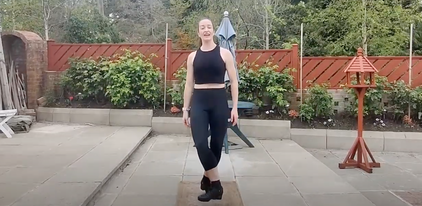 Click the image for a video with 3 simple drills to help improve your rhythm! Click the image for a video with 3 simple drills to help improve your rhythm! If a dancer is struggling with rhythm, the first step is to determine if they can hear the rhythm of the music. An easy test of this is having them clap along with it—some people simply can’t naturally hear the rhythm of the music and can’t follow, say, the beat of a jig (fast fast slow or up up down.) This is a skill you'll see practiced in our earliest levels (Tiny Jig and Pre-Beginner especially) and while it may not look like dancing, it's a precursor to this very important aspect of Irish dance! If clapping isn’t working, trying having them count the beats out. That may not work either, and it can be difficult for some dancers to realize they can’t accurately hear the rhythm of the music. Musicality is often a learned skill, and can usually be improved with patience, diligence, and help! A private lesson (or a few) for dancers struggling with rhythm is always a good idea, particularly if they have a specific dance they’re struggling with. Private lessons for rhythm issues give instructors the time to break down the dance and even record it for further study for the dancer without taking away from class time. But there are exercises you can try at home as well (besides constant practice, which is always a good idea!) This suggestion comes from feis circuit musician and former Irish dancer, Sean O’Brien—his fix for improving your rhythm is to practice your dances alongside a metronome instead of the music, saying: “This is the simplest way to strip music back to its fundamental, unchanging beat. Sometimes people can be confused by the layers of instruments, and a metronome helps to distinguish the underlying tempo.” Rhythm is a difficult concept to explain in words, and there’s always an ongoing debate about whether or not it can actually be taught. Our verdict here at SRL? Miss Courtney herself struggled with rhythm early on in her dance career, but (clearly!) overcame it—so there’s probably no better place to work on it than here at SRL! This post is part of a series. Read our last technique review post, all about extension, here. Check out the blog every Monday and Thursday for more posts about Irish history, dance culture, community news, and spotlights on our dancers, staff, and families—among other fun projects! And don’t forget to dance along with us on both Facebook and Instagram. Volume XVI Part 1 Last year, we posted pretty extensive gift guides for every kind of Irish dancer and Irish dancer gift we could think of: the littlest dancer, the competitive dancer, Irish dance décor, Irish dance apparel, a feis survival basket, Irish dance parental figures, and even stocking stuffers! All those suggestions are still up to peruse (just click on the category that strikes your fancy,) but we thought we’d go a different route this year. While material gifts are always going to be exciting, the events over the past almost two years (crazy!) have really brought to light what matters most: helping others as part of a global community. Inspired by all those hearts and thank yous all over for essential workers, we’re here to let you know about some of our favorite Irish charities to donate to in lieu of a present or two this holiday season. First up, we have Barretstown! This not-for-profit camp for children with cancer and other serious illnesses is located in County Kildare at the beautiful Barretstown Castle in Ballymore Eustace. It was founded in 1994 by Paul Newman (yes—that Paul Newman) and provides what they call “therapeutic recreation” for the campers aged 7-17 that helps enhance the children’s lives and rebuild self-confidence in the face of the struggles they’re facing. The camp is a member of the Serious Fun Group, a global children’s network dedicated the improving the quality of the lives of children who have been impacted by serious childhood illnesses. Their first camp was right here in Connecticut in 1988, but there are now 30 worldwide—including Barretstown in Ireland! The camp is completely free to campers, which means they need to raise €4.5 million a year to keep it running. Well, along with the 1,200 volunteers or “caras” (it means friend in Irish!) who donate their time to the campers! (And good news: as of this year, the Barretstown program is open to US-based children as well!) Next, we’d love to turn the spotlight on Cuan Mhuire. The name means “Mary’s Harbor” and it was founded in 1966 by a nun named Sr. Consilio and her order, the Sisters of Mercy, to help people struggling with alcohol, drug, and gambling addictions. Since that time, it’s charitably treated over 100,000 individuals in its locations throughout Ireland, with approximately 40% of patients experiencing homelessness at the time of their admission. Between the harmful stereotypes that still persist about Irish alcohol consumption to this day and the cultural norms that perpetuate addiction problems throughout Ireland, Cuan Mhuire is providing an invaluable public service and has been honored innumerable times over the years. This was the first purpose-built rehabilitation center in all of Ireland and focuses on uncovering underlying issues that led to addiction and treating the whole person, rather than the disease, through a variety of therapeutic techniques. With their primary philosophy being that all people are worthy and that there are no hopeless cases, we think it’s a worthy cause! Lastly, we’d love to take a moment to talk about the Irish Wildlife Trust! They’ve been around as both a lobbyist in Irish politics and a national conservation-based charitable organization since 1979. The IWT’s goal is multifold: to conserve wildlife and their habitats throughout Ireland, while also encouraging understanding and appreciation of the natural world and educating the populace on both the importance of this and how to pitch in. It would take a whole new blog post to list all the environmental impact groups they’re a part of—from Seas at Risk and the European Environmental Bureau to Bat Conservation Ireland and Badgerwatch Ireland—and they have branches all throughout the country (check out a list of their current campaigns here.) Between their work on national parks and the numerous studies and surveys they perform, IWT is on the front lines of environmental conservation that not only serves Ireland, but every tourist that visits to see the island’s natural splendor.
But these are only a few of Ireland’s many laudable charitable causes! Check in next week for a few more options, (or check out this (not comprehensive, but extensive) list--List of Charitable Organizations in Ireland—in the meantime.) This post is part of a series. Read our last Modern Ireland post, all about Trinity College Dublin, here. Check out the blog every Monday and Thursday for more posts about Irish history, dance culture, community news, and spotlights on our dancers, staff, and families—among other fun projects! And don’t forget to dance along with us on both Facebook and Instagram. Volume XV Trinity College Dublin We’re back with the university spotlight turned to another part of the country, from Limerick to…Dublin! Ireland’s largest city also happens to house its top-ranked university: Trinity College Dublin (it’s also, impressively, ranked 101st in the world—or 43rd according to another report!) Technically the second university founded in Ireland (The Medieval University of Dublin, established in 1320, only lasted 200 years or so,) it’s currently Ireland’s oldest surviving university! Founded by Queen Elizabeth I in 1592, it was intended to be Ireland’s version of Cambridge or Oxford and the connection remains today—its sister schools are still St. John’s College at Cambridge and Oriel’s College at Oxford. In fact, a graduate of Trinity College Dublin, Cambridge University, or Oxford University can be awarded a comparable degree at the other two without further examination. TCD’s libraries house 7 million volumes, including original manuscripts of historical significance like The Book of Kells (it’s been there since 1661 where it was placed for safekeeping from political upheaval.) It should be no surprise that the library is considered one of Europe’s most beautiful to this day, and remains the largest in Ireland. The school was only open to Protestant students until 1793, and admitted its first female student in 1904—though now its doors are open to any and all who apply. Well, that’s not strictly true—Trinity is a top school with strict academic standards to match. Admissions at TCD rely purely on a student’s academic merits, with no other considerations made. As we’ve discussed in previous posts about secondary education in Ireland, students are admitted to a specific course of study…and with 18,000 students enrolled in 23 schools and 400 courses in graduate, and post-graduate level study, there’s plenty of programs to apply to—all top of their field! However, the most competitive and well-regarded programs at Trinity are law, humanities, and literature. It’s no wonder that some of Ireland’s greatest literary minds have degrees from Trinity, including the likes of Jonathan Swift, Oscar Wilde, William Congreve, Samuel Beckett (a Nobel Laureate to boot,) and Sally Rooney—just to name a few (and we didn’t even get to the politicians!) When TCD was founded and originally built it was located slightly outside the city, but as time passed and Dublin grew, it grew around the university. Now, Trinity is the heart of the city and students have all the perks of city life coupled with the perks of student life! Trinity’s campus is built in such a way to make students feel that they have a tranquil space in the midst of the bustling city around them—with most buildings facing inward toward beautifully manicured quads. While the campus is 47 acres, the huge number of societies (120+) and sports clubs (50+) brings the student body together, as well as the many Trinity traditions (and their good-natured rivalry and “colour wars” with University College Dublin!) Trinity continues to follow the Oxbridge example with (at least) two other traditions: their formal dining for scholars (top students with special privileges) in Commons (with prayers in Latin and full wait staff) and the elaborate event for all students, but especially those graduating, known as the Trinity Ball (click the link to learn more, but it’s Europe’s biggest private party with approximately 7,000 attendees!) Ranked 17th in the world for international students, Trinity has students and staff from over 120 countries (with 28% of students from outside of Ireland!) Worried about visas? TCD makes sure to give graduating undergraduates the option to remain in Ireland for 1-2 years of postgraduate studies or work experience within Ireland, which they help arrange. If this leads to full time employment, the US-Ireland Working Holiday agreement helps US students on their way to a more secure work permit! For a US-based student, Trinity is an excellent pathway to making Ireland, the UK, or Europe as more permeant home (sorry, parents! Just reporting the facts.)
A school with a 400-year history is pretty difficult to sum up in a blog post, but the long and short of Trinity College Dublin is this: if you want to study it, Trinity is a pretty wonderful place to do so. Definitely meant for the most academically ambitious students across the globe, TCD balances collegiate tradition with cutting edge scholarship, but doesn’t skimp on the regular college experiences. But we’ve only covered two of Ireland’s seven universities…keep an eye on the blog for more, coming soon! This post is part of a series. Read our last Modern Ireland post, full of middle grade book recommendations, here. Check out the blog every Monday and Thursday for more posts about Irish history, dance culture, community news, and spotlights on our dancers, staff, and families—among other fun projects! And don’t forget to dance along with us on both Facebook and Instagram. Yuletide Edition! Read our last ten fun facts here. 1. Before the island was anglicized and adapted to having a sweet Christmas pudding (meaning cake) on December 25th, the traditional Irish Christmas cake was a “seed cake.” It’s exactly what it sounds like—a not particularly sweet cake filled with seeds and spices we’d generally consider savory, like carraway and poppy. 2. If you head into the Irish countryside around Yuletide, you’re likely to see a few whitewashed buildings. Traditionally, families would clean and whitewash every building on their property come December. This wasn’t only in order to clean up for visiting relatives, but symbolic of purification before the Christmas celebrations. (This one is a tradition in many cultures in Central Europe, too!) 3. December 8th is considered the beginning of the holiday season in Ireland. While in America, we’ve started putting up Christmas decorations the day after Halloween (that’s capitalism for you,) Ireland’s Christian roots start the Yule season on the feast day of Immaculate Conception. In times past, this was the day the hordes would flock to Dublin to do their Christmas shopping—and now it’s the day the decorations go up! (Schools are generally closed that day, too!) 4. While people all over the world are dreaming of a white Christmas, you’re not too likely to get one in Ireland! It barely ever snows anywhere on the island. and though we tend to think of Ireland as cold and wet, it is an island—meaning its temperate climate stops it from getting too hot or too cold. The average temperatures range from 48 to 39 degrees Fahrenheit in December! (It’s already colder here!) 5. One of Ireland’s most…surprising Yuletide traditions actually occurs the day after. Known as Saint Stephen’s Day in Ireland, it’s like a rowdier second Christmas celebration that’s celebrated with horse races and Wren Boys—men dressed in over-the-top homemade costumes who sing and play music through the streets as they “hunt the wren” (i.e. carry around the effigy of a wren in a holly bush on the top of a pole.) This tradition stems from an old Irish tale where a wren, known for its loud song, betrayed a group of loyal Irish to the British. 6. January 6th is known as the end of the Christmas season in a lot of places, but Ireland has their own special twist on “Little Christmas.” The Irish call the day Nollaig na mBan or “Women’s Christmas.” Traditionally, most women were hard at work through the holidays, and the 6th was the day they were supposed to take a rest while their husbands took down all the holiday decorations (it’s considered bad luck to do it before or after!! We hope things are more equal now, but it still sounds like a nice break to us! 7. While it’s fallen out of favor in lieu of milk and cookies, it used to be popular to leave out a Guinness and a mince pie for Santa! (After all, Guinness is a very sustaining beverage.) 8. It’s believed that the Christmas carol with the longest history originated in Ireland. The Irish (and others) have been singing “The Wexford Carol” since the 12th century, leading it to be named the longest sung carol in the world. It’s based around the nativity and is also known as “Enniscorthy Carol” as it originated in, you guessed it, Enniscorthy in County Wexford. Want to hear it? Click here! 9. The Mourne Mountains in County Down is Santa’s (or as the Irish often say, Santy’s) official Irish residence! These mountains are very secluded, perfect for Santa to take a rest and help out his elves with the rest of the toys before Christmas is here, along with Rudolph and the rest of his reindeer. Want a tour? Check out this video.
10. Ireland has a lot of Yuletide traditions, but perhaps none so frosty as the Christmas Day Swim at Forty Foot in South Dublin! Christmas morning, hundreds gather to leap from Forty Foot Rock into the Irish Sea in nothing but their bathing suits (which is about 50 degrees Fahrenheit usually—the real problem is getting out,) often using the opportunity to raise money for charity. This post is part of a series. Read our last batch of fun facts here. Check out the blog every Monday and Thursday for more posts about Irish history, dance culture, community news, and spotlights on our dancers, staff, and families—among other fun projects! And don’t forget to dance along with us on both Facebook and Instagram. 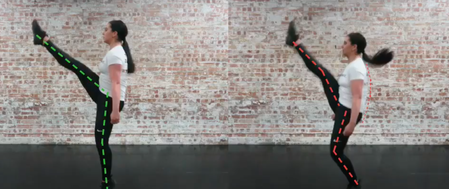 Welcome back to technique review, where we cover the most essential principles of Irish dance that every dancer needs to practice, train, and condition for—from Beginner to Championship level! This week, we’re taking a look at extension, a term which specifically refers to the line of the leg while dancing. It may sound simple, but it’s anything but! Proper extension for Irish dance is a little more complicated than standing up straight—it refers to the leg being fully straight and the knees pulled up at all times. The term “knees pulled up” can be a little confusing for non-Irish dancers, but signifies the muscles literally pulling up as you rise on your toes and extend your knee fully (it’s the correction Irish dance teachers love to yell when you bend your knees!) Once you reach the higher levels of Irish dance, this also refers to the dancer using the space on the stage to their full advantage, reaching as far as they can to “fill” each movement. While fully straightening your leg seems like something we all do every day, it actually requires a particular type of flexibility—most notably, the hamstrings. If you’re getting notes back from the adjudicators (or your teachers) noting that you’re “sitting on your knees,” it means your back leg is bent while dancing and you’re most likely dropping your heel. Tight hamstrings are the most likely culprit—it probably feels like you’re fully extending, even when you’re not! This isn’t a problem limited to Beginner dancers, as it’s something that can follow you into the upper levels if not addressed. While all our upper level classes begin with exercises meant to increase flexibility, hamstring flexibility doesn’t have an overnight fix. Like everything in Irish dance, it takes patience, dedication, and constant practice—i.e. daily stretching over a long period of time. Remember to NEVER stretch cold—always warm up first for 5-10 minutes—and make sure to hold each stretch for 40-60 seconds, focusing on each stretch as you complete the action. Need some new hamstring stretches? We love Target Training Dance for great tricks and tips specifically tailored to Irish dancers! 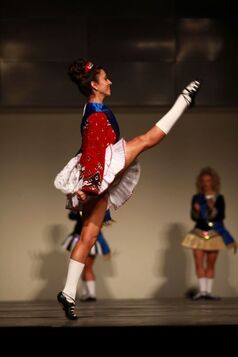 An example of full extension in a competition setting—this isn’t referring to the height of the kick, but the line of the legs An example of full extension in a competition setting—this isn’t referring to the height of the kick, but the line of the legs But hamstrings aren’t the only muscles that need to be addressed! A dancer’s glutes and quads are equally important, as these are the muscle groups you’re most actively engaging when you’re “pulling up” from your knees. The stronger your glutes and quads, the more focus you’ll be able to commit to this part of your form and the more natural a fully extended leg will become. But remember: leg strength and flexibility need to be balanced with core strength for this to work—Irish dance is a whole body workout. Click any of the links throughout this article to see a wide variety of exercises for everything from your hamstrings to your core! (That’s right, every single link here is another exercise (or set of exercises) to help with extension! And here’s one more for good measure.) But why is extension important? It’s not only that proper form requires a clean line from a dancer’s leg—there’s long term health and safety risks, as well. An estimated 80% of Irish dance injuries stem from overuse—which doesn’t mean your dancer is dancing too much, as much as it means they need further conditioning, a balance of strengthening and stretching in equal measure. It’s imperative for all Irish dancers to condition outside of their regular class time in order to avoid overuse injuries and be able to continue to improve. This article even found links between hamstring flexibility and the ability of a dancer to advance through the competitive levels. Whether you’re just starting out or have a room full of medals, remember: extension is key! (And so are the exercises to help improve it!) This post is part of a series. Read our last technique post, all about arching, here. Check out the blog every Monday and Thursday for more posts about Irish history, dance culture, community news, and spotlights on our dancers, staff, and families—among other fun projects! And don’t forget to dance along with us on both Facebook and Instagram. |
SRL NewsFind all of our latest news on our Scoil Rince Luimni Facebook page! Categories
All
Archives
August 2022
|
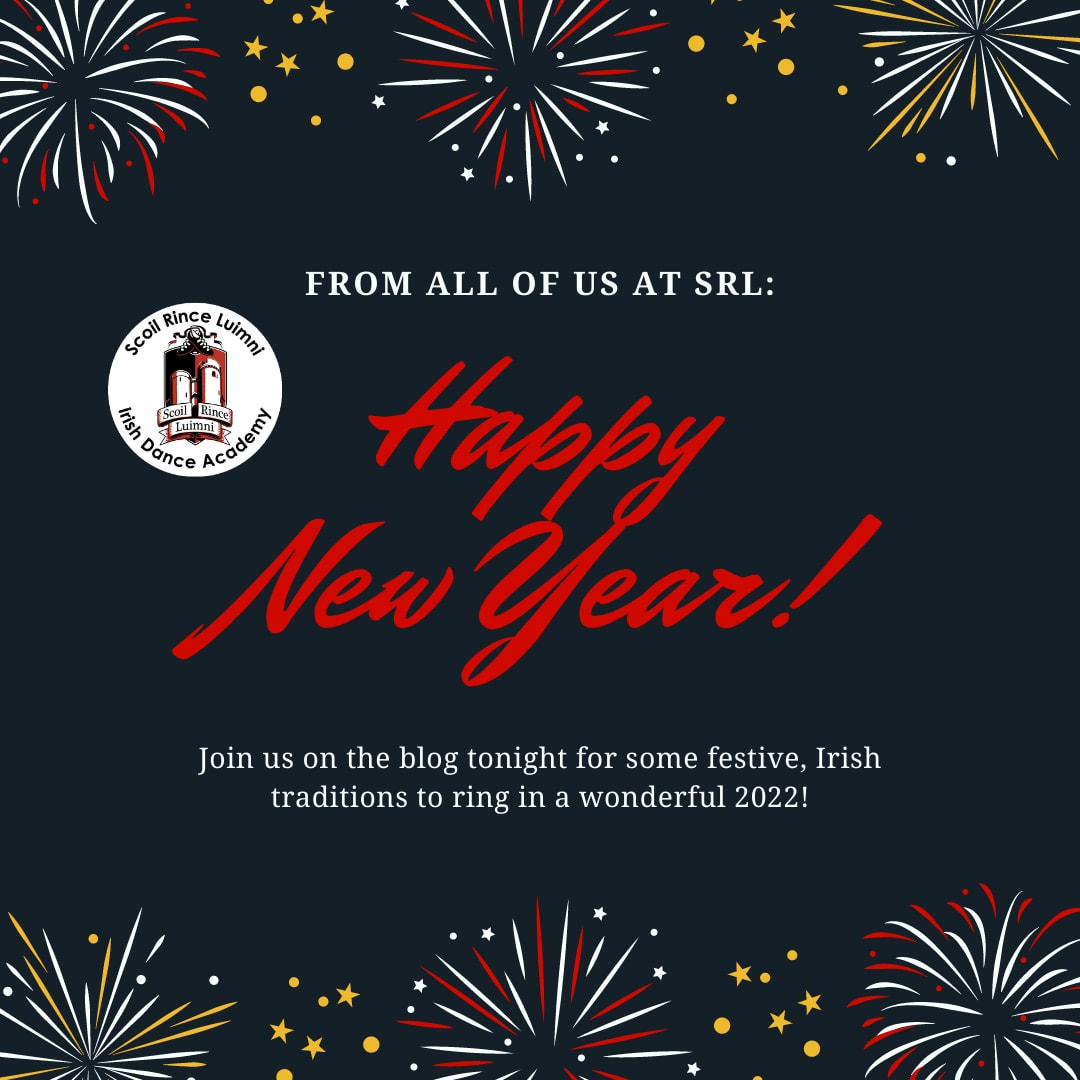
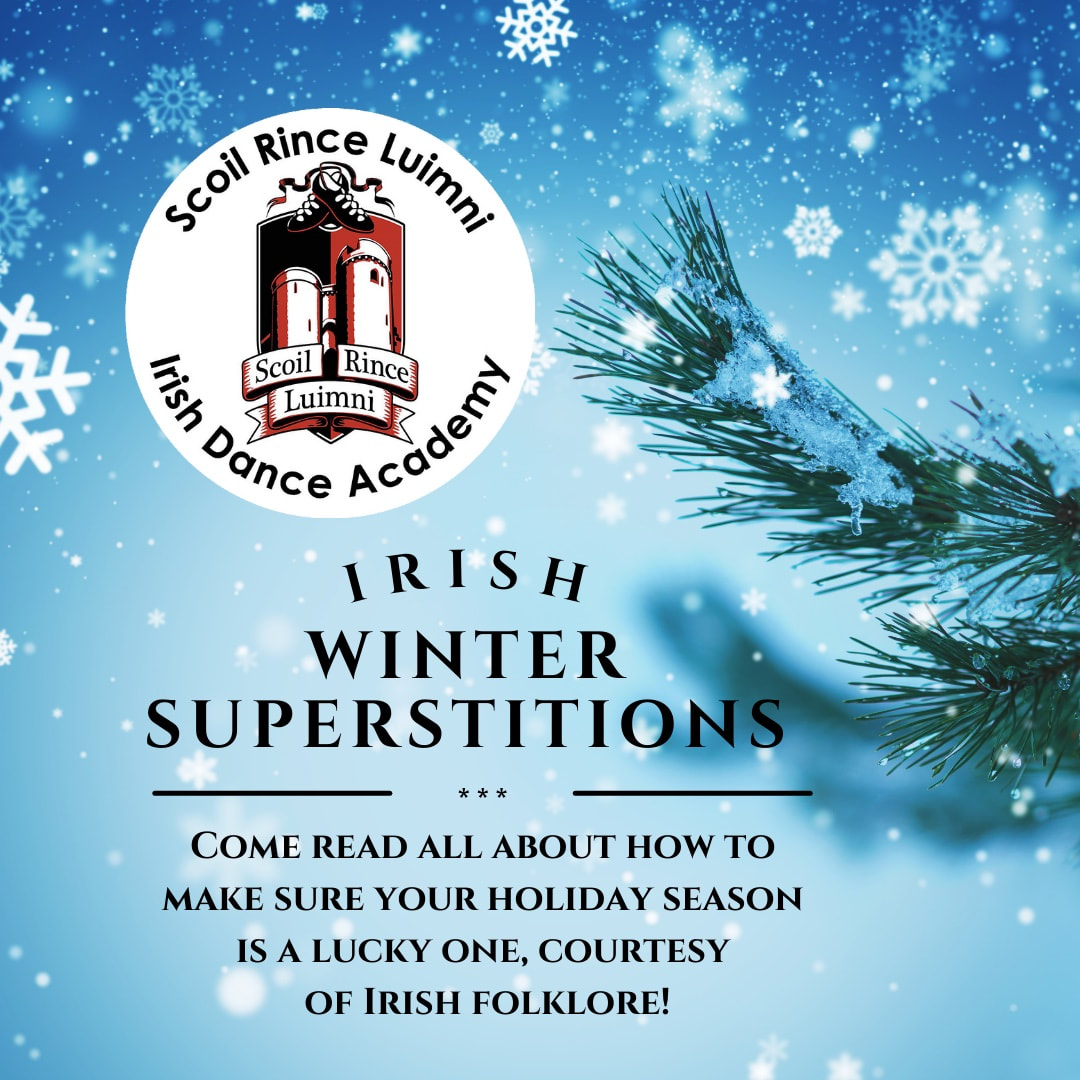
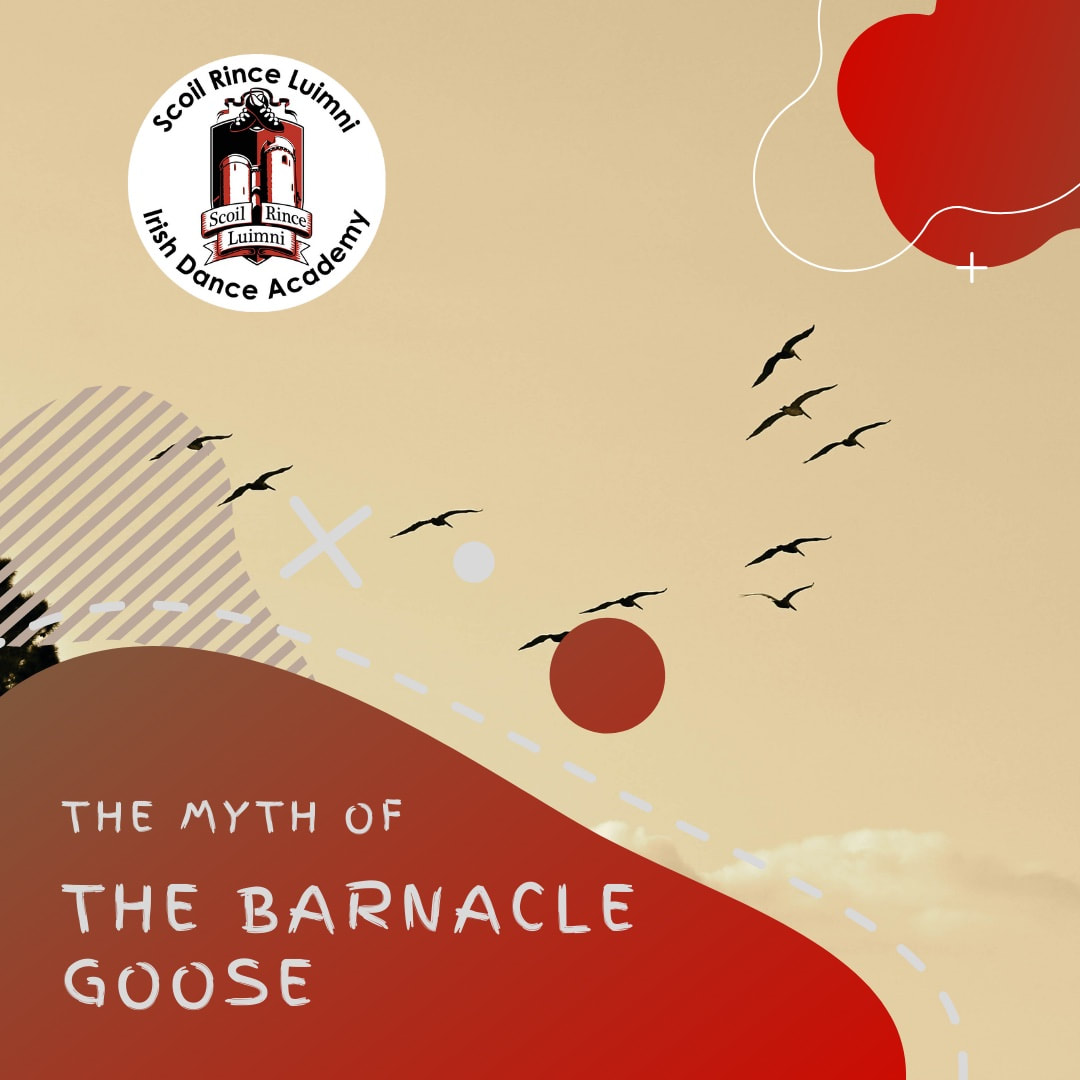
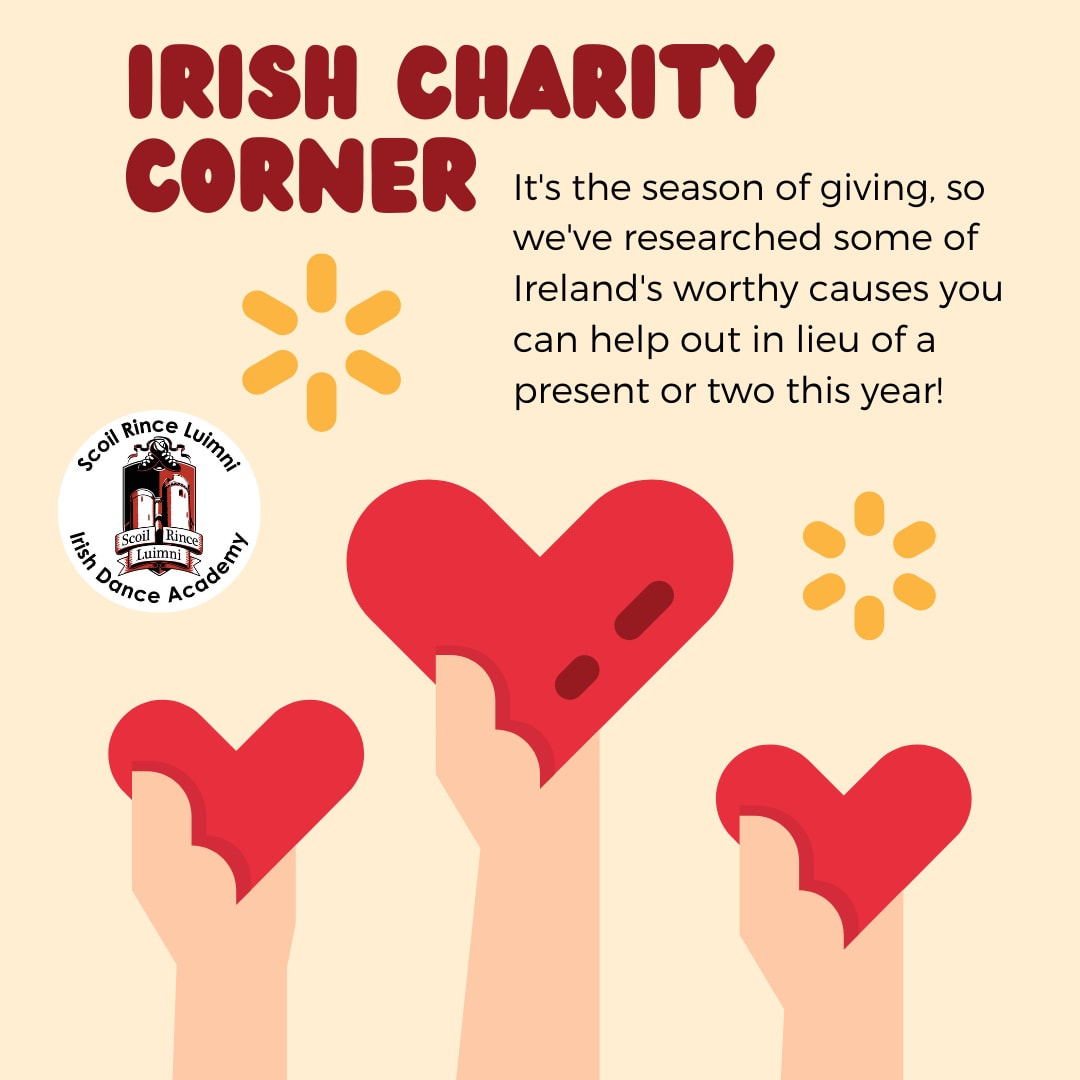
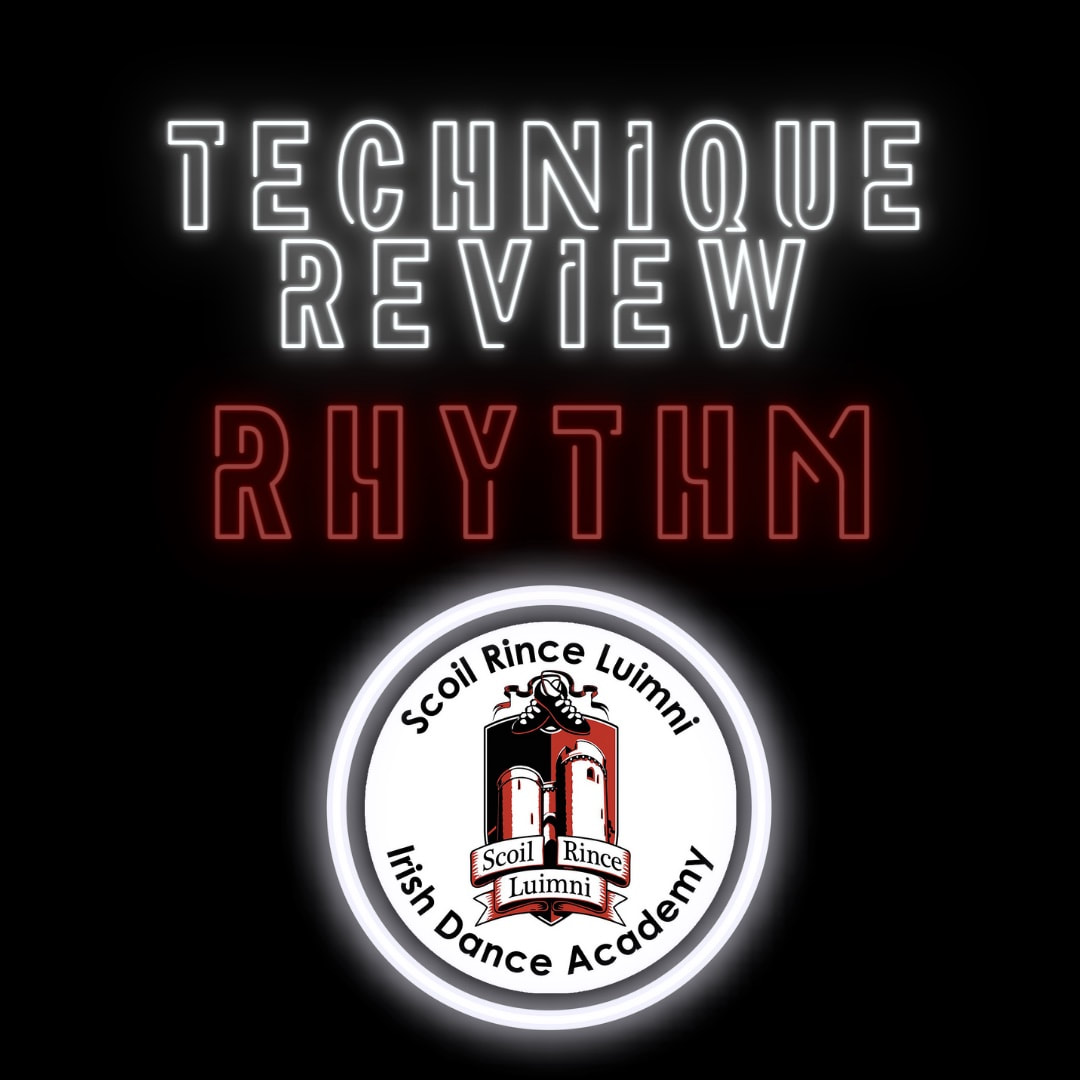
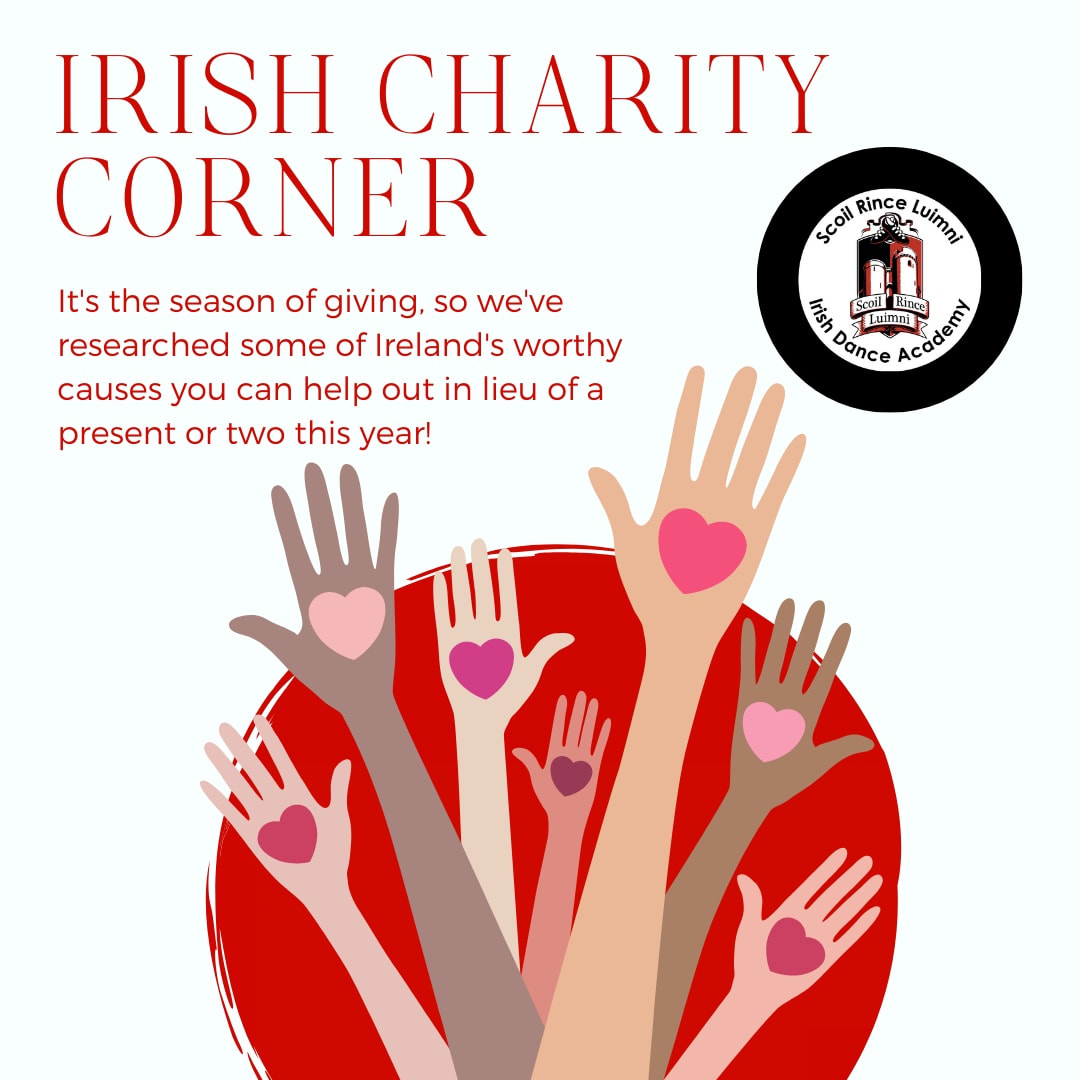

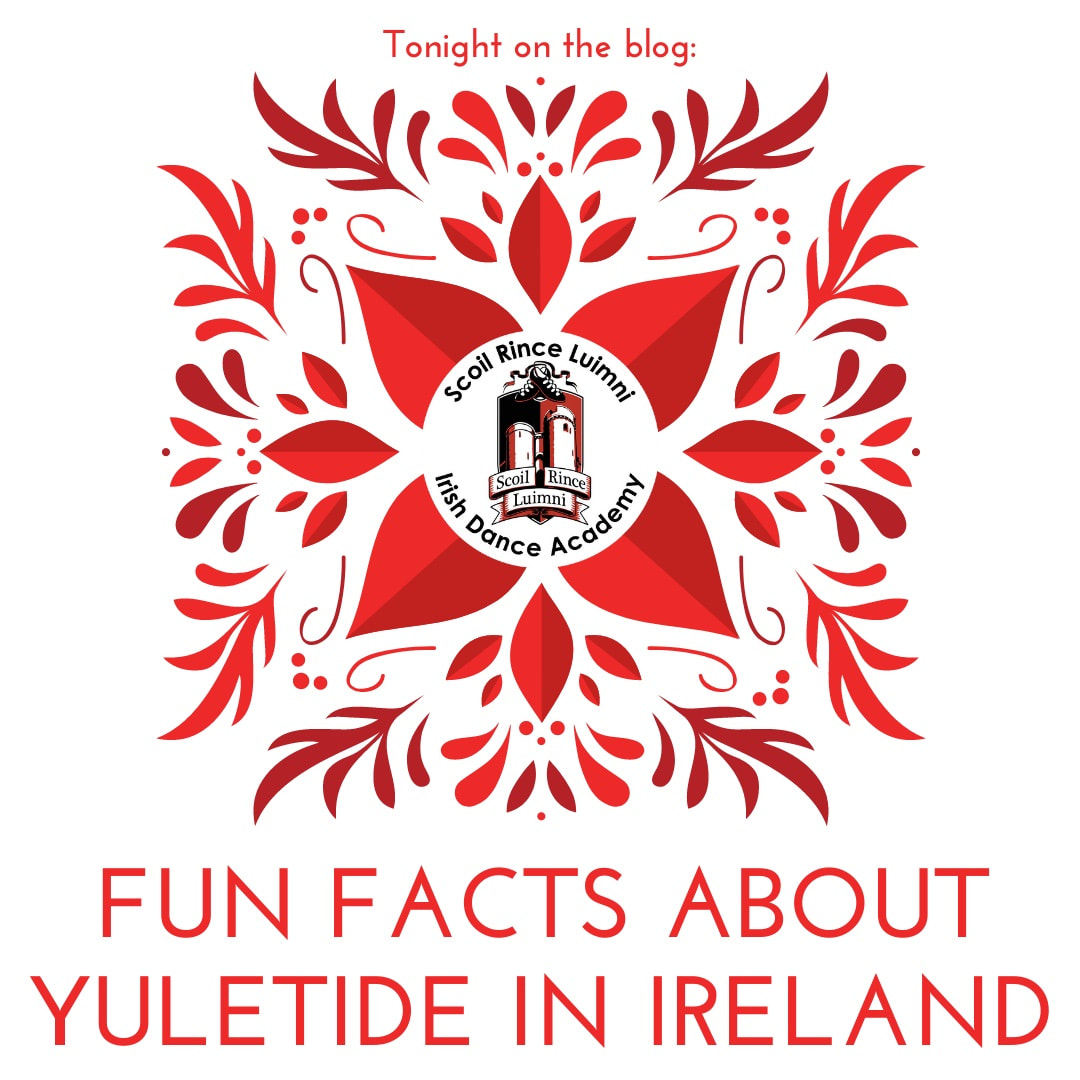

 RSS Feed
RSS Feed